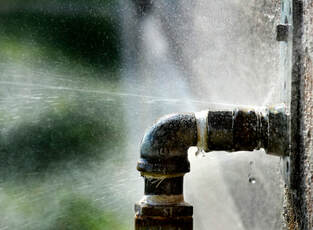Guide To Water Leak Detection At Home
Guide To Water Leak Detection At Home
Blog Article
Right here below you will find a good deal of sensible data around Hacks to detect leaks.

Early detection of dripping water lines can minimize a possible disaster. Some small water leakages may not be noticeable.
1. Analyze the Water Meter
Every residence has a water meter. Examining it is a surefire way that assists you find leakages. For beginners, switch off all the water resources. Make certain no person will certainly flush, use the faucet, shower, run the washing machine or dishwashing machine. From there, most likely to the meter as well as watch if it will change. Because no person is utilizing it, there must be no activities. That indicates a fast-moving leakage if it relocates. If you detect no adjustments, wait a hr or two and examine back once again. This means you might have a slow leakage that might even be below ground.
2. Examine Water Usage
If you identify unexpected changes, regardless of your consumption being the very same, it indicates that you have leakages in your plumbing system. A sudden spike in your bill shows a fast-moving leak.
A steady increase every month, also with the very same habits, reveals you have a slow leak that's likewise gradually escalating. Call a plumber to thoroughly check your property, particularly if you feel a warm location on your flooring with piping beneath.
3. Do a Food Coloring Test
30% comes from commodes when it comes to water usage. Test to see if they are running appropriately. Drop flecks of food color in the storage tank and wait 10 mins. If the shade somehow infiltrates your dish during that time without flushing, there's a leakage in between the storage tank as well as bowl.
4. Asses Outside Lines
Do not neglect to inspect your outside water lines also. Should water permeate out of the link, you have a loose rubber gasket. One small leak can waste lots of water and also surge your water costs.
5. Examine the scenario as well as inspect
Property owners should make it a practice to check under the sink counters and also also inside cabinets for any type of bad odor or mold development. These two warnings show a leakage so punctual focus is needed. Doing routine evaluations, also bi-annually, can save you from a major issue.
Much more significantly, if you recognize your home is currently old, keep a watchful eye on your heaters, pipes, pipelines and so on. Look for stainings and damaging as many pipelines and appliances have a life span. They will additionally normally wear away as a result of wear and tear. Do not wait for it to escalate if you believe dripping water lines in your plumbing system. Call a professional plumber as soon as possible so you don't end up with a terrible mess in your house.
Early discovery of leaking water lines can reduce a prospective disaster. Some little water leakages may not be visible. Examining it is a proven method that assists you find leaks. One tiny leakage can squander bunches of water and also increase your water costs.
If you presume leaking water lines in your plumbing system, do not wait for it to intensify.
WARNING SIGNS OF WATER LEAKAGE BEHIND THE WALL
PERSISTENT MUSTY ODORS
As water slowly drips from a leaky pipe inside the wall, flooring and sheetrock stay damp and develop an odor similar to wet cardboard. It generates a musty smell that can help you find hidden leaks.
MOLD IN UNUSUAL AREAS
Mold usually grows in wet areas like kitchens, baths and laundry rooms. If you spot the stuff on walls or baseboards in other rooms of the house, it’s a good indicator of undetected water leaks.
STAINS THAT GROW
When mold thrives around a leaky pipe, it sometimes takes hold on the inside surface of the affected wall. A growing stain on otherwise clean sheetrock is often your sign of a hidden plumbing problem.
PEELING OR BUBBLING WALLPAPER / PAINT
This clue is easy to miss in rooms that don’t get much use. When you see wallpaper separating along seams or paint bubbling or flaking off the wall, blame sheetrock that stays wet because of an undetected leak.
BUCKLED CEILINGS AND STAINED FLOORS
If ceilings or floors in bathrooms, kitchens or laundry areas develop structural problems, don’t rule out constant damp inside the walls. Wet sheetrock can affect adjacent framing, flooring and ceilings.
https://www.servicemasterbyzaba.com/blog/how-to-detect-water-leakage-in-walls/

I found that blog posting about Leaking water lines when doing a search on the search engines. Those who enjoyed our article plz be sure to pass it around. I cherish reading our article about Locating water leaks.
Report this page